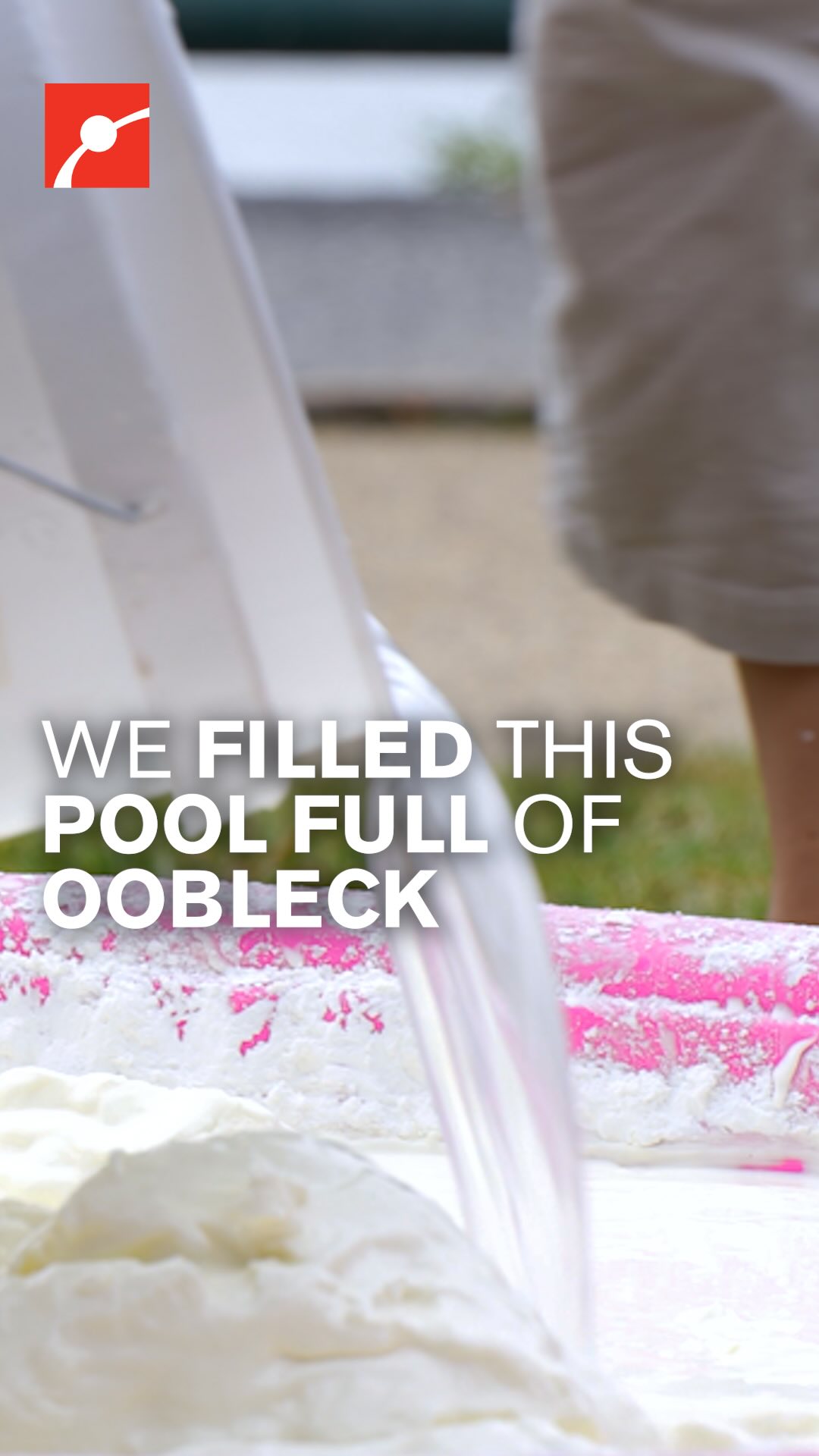- Exploration of the science behind oobleck as a non-Newtonian fluid and its unique properties.
- Insights into the process of filling a pool with oobleck and walking on its surface.
- Explanation of how to make oobleck at home with simple ingredients.
- Examination of the educational value and applications of oobleck in scientific demonstrations.
- Discussion on the broader implications of understanding non-Newtonian fluids in various fields, including zoology and conservation.
Oobleck, a simple mixture of cornstarch and water, is a fascinating material known as a non-Newtonian fluid. This term refers to fluids that do not follow Newton’s law of viscosity, meaning their flowability changes under stress. In the case of oobleck, it behaves as both a liquid and a solid, depending on how you interact with it. This duality presents an exciting opportunity to explore the fundamental principles of fluid dynamics in a hands-on manner.
To illustrate the unique properties of oobleck, a group of museum educators filled an entire pool with it, allowing participants to “walk” on its surface. This experiment showcased the material’s ability to support weight when pressure is applied quickly. When someone runs or walks briskly across the pool, the particles in the oobleck lock together, forming a temporary solid surface. If the person stops or moves slowly, the oobleck returns to its liquid state, resulting in a sinking sensation. This dynamic behavior is not just intriguing but also a powerful tool for teaching scientific principles in an engaging way.
Making oobleck at home is both simple and educational. By mixing two parts cornstarch with one part water, anyone can create this non-Newtonian fluid. Adjusting the proportions can change its consistency, inviting experimentation and learning. This accessible activity serves as an excellent entry point for conversations about complex scientific concepts, offering a tactile and memorable experience that young learners find exhilarating.
The educational value of oobleck demonstrations extends beyond fun and games. It provides a tangible way to witness fluid dynamics at play, demonstrating how stress and strain affect materials. This understanding can be applied in various fields, including engineering, material science, and biology. For example, non-Newtonian fluids like oobleck can help explain certain animal behaviors, such as the movement of creatures through mud or other viscous environments.
Understanding non-Newtonian fluids also has implications in wildlife conservation and zoo management. Many animals interact with complex terrains that require efficient navigation through non-standard materials. Insights gained from studying materials like oobleck can inform better habitat design and enrichment strategies for animals in captivity, enhancing their well-being.
In addition to practical applications in zoology and conservation, the study of non-Newtonian fluids contributes to a broader appreciation of the diversity and complexity of materials. It underscores the importance of adaptive thinking and innovation, challenging existing paradigms and encouraging the exploration of new scientific frontiers. By engaging with oobleck in both educational settings and at home, individuals develop a deeper understanding of the physical world, fostering a curiosity-driven approach to learning.
Ultimately, the experiment of filling a pool with oobleck and walking on it not only captivates the imagination but also serves as a catalyst for deeper scientific inquiry. It bridges the gap between theoretical knowledge and real-world applications, demonstrating how a simple mixture of cornstarch and water can transform into a powerful learning tool. As we continue to explore and understand non-Newtonian fluids, the potential for discovery and innovation remains vast, promising new insights and applications across various fields.
*****
Source Description
We filled an entire pool with oobleck — and walked on it!
Oobleck is a non-Newtonian fluid made from just cornstarch and water. Museum Educator Emily explains what makes oobleck act like both a liquid and a solid and shows you you can make it at home!

